In response to my recent post about the vintage Arvin 68R58 transistor radio, SWLing Post reader, James Patterson, has shared photos of his collection in New Zealand. James has captioned each photo below:
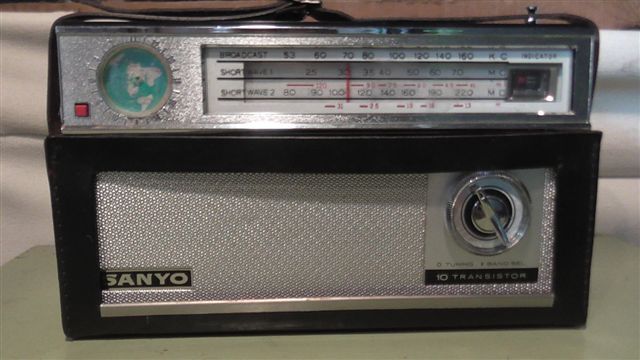
This portable Sanyo was bought at a “Second Hand” shop. It had badly corroded battery connections. I repaired it and it works fine now.
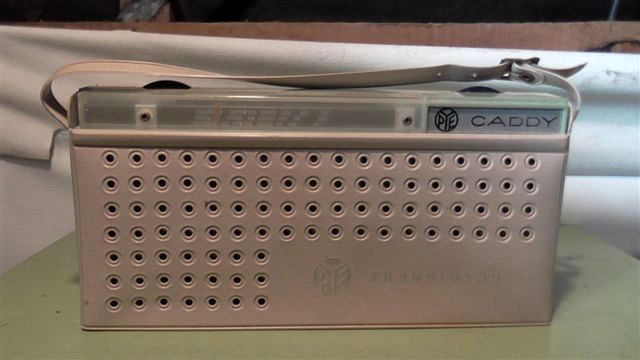
This PYE Caddy was actually made here in New Zealand. I believe the design was from the UK though. It still works very well.
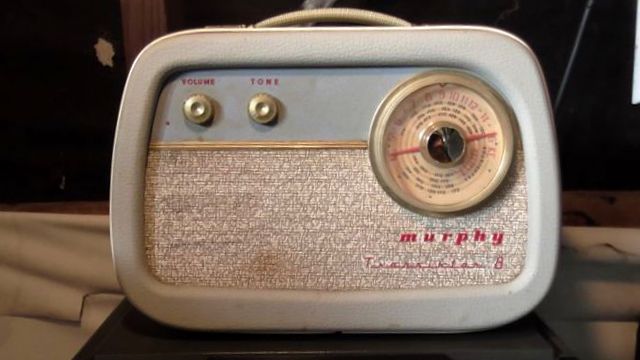
The “Murphy 8” Transistor radio. Broadcast band only. Wooden case in fab condition. Works very well.
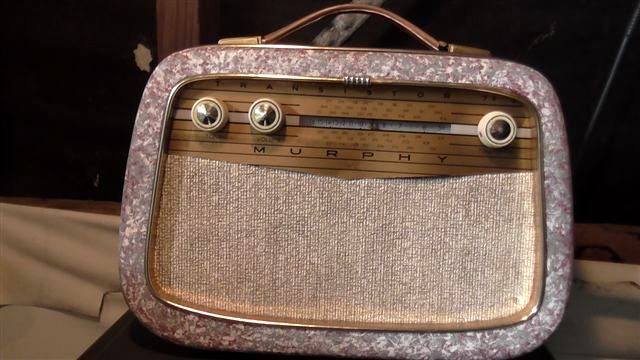
This is a “Murphy Transistor 7+” Im not sure what the “+” means because it does have only 7 transistors. Very good performer for its age. Wooden case is identical to the previous Murphy 8.
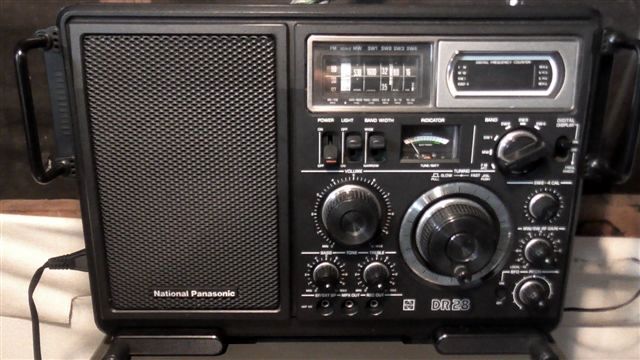
This National Panasonic DR 28 is not part of my early AM Transistor radio collection. It is, however, part of my shortwave radio collection.
Many thanks, James, for sharing photos from your collection! You certainly have some gems in there. I was not at all familiar with the New Zealand-made PYE Caddy, in fact. I’m curious if other radios were made in New Zealand in the past.
I bet you and I might agree that the Panasonic DR-28 (a.k.a. RF-2800 in North America) hardly feels “vintage,” but at 37 years old it certainly qualifies by most standards–hard to believe. The RF-2800 pops up on eBay quite often and has certainly held its value well. (Click here to search.)
Seeing the DR-28/RF-2800, in fact, is making me lust even more after the venerable Panasonic RF-2200! Alas…so many radios!

![Very early National portable with twin speakers, broadcast [band] and [shortwave. Works very well.](https://swling.com/blog/wp-content/uploads/2015/06/NationalPanasonic.jpg)
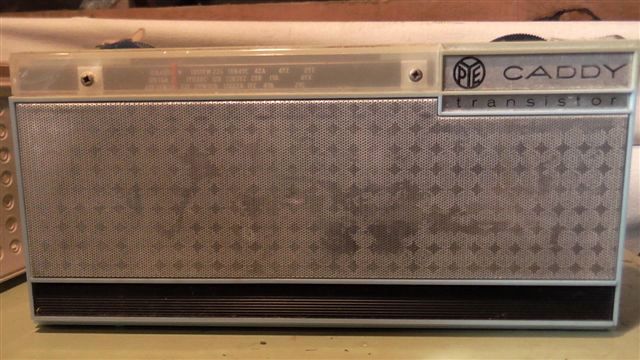
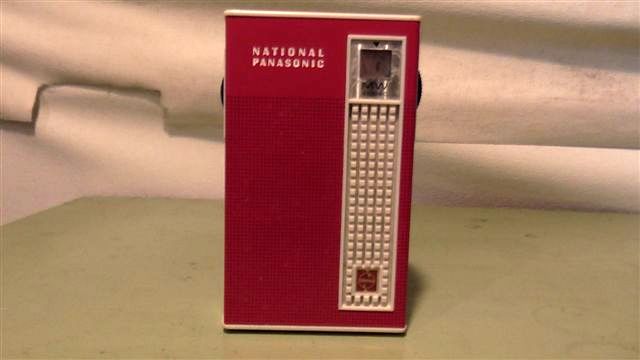
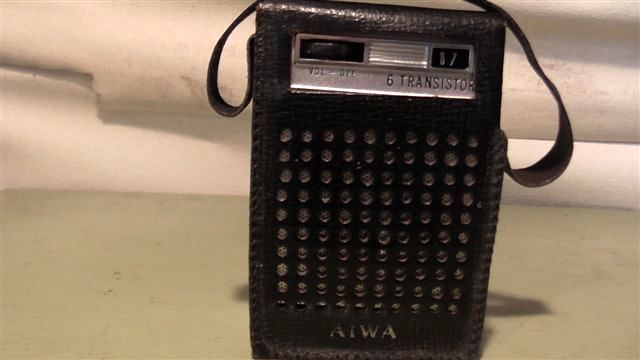
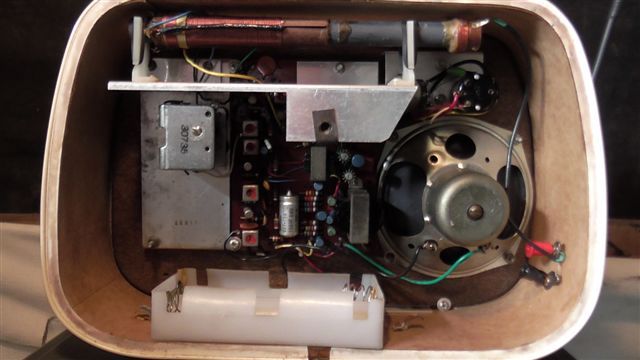
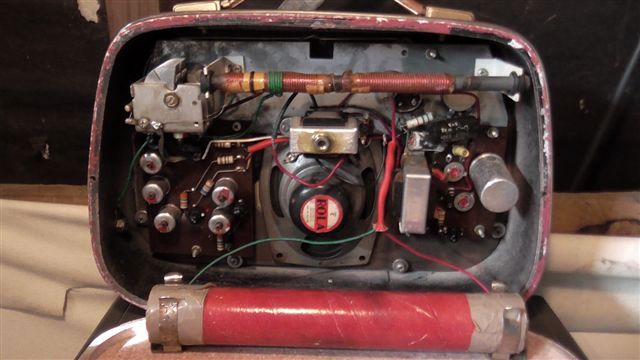
I do have Nivico 9 Transister 7 Band Deluxe radio. Any one interested. 03004251642
Hi
I am repairing a HMV 68-55 in the moment. Mantel transistor radio from the 70th.
So far I have only replaced the 2200uF filter cap and I have to replace the other four caps on the board. The rectifiere is only a single diode. The power consumption is only 5 Watts.
The hum noise is gone.
The radio works well even in this stage of repair.
The metal parts of the chassis are all conected to ground. It is safe even to todays regulations.
I use the radio to listen to ABC national in Townsville 630 kHz.
The transistors are silicon only the two power amp transistors are Germanium transistors.
The radio is more as 40 years old and needs only very little maintinance. It is a good performer but not a DX AM radio. The quility of the hmv made in Australia is good, well build radio.
Cheers
Hello James… and everyone else. I am from India. As the carpenters song, ‘When I was young I would l listen to the radio…’ My dad’s set was an National R5310B . … BBC, VOA, and the unforgettable International Top Hits, Radio Australia, ….Countdown…. etc. , etc.
all on SW.
I just wanted to warn your bloggers about dangers of placing these older sets, without magnetically shielded loudspeakers next to today’s laptops, mobile phones, hard disks etc. …etc. Be sure to place them at least 2m,. 6feet away. They can cause you your device memory to be erased, data loss. I will leave more explanations upto you. Thanks for sharing.
For the interested person with the DR 28,You by now may have found the correct lead and plug to fit your radio.They were quite common a few years ago,so if you havent already found one I would say go visit any electrical appliance shop that looks as though they still repair older radios and appliances.What you need is a flat plug,there are normaly two or three different types ,but each has its own socket fitting.Im sure from memory the DR 28 has a two pin flat plug with a “ridge” along the top of one side enableing it to slide into the socket on the back of the radio.Other than that,if the battery connections are not corroded,the size “C” batteries normaly give a very good life.Replaceing the battery terminals is quite easy as they can be remade and soldered in by anyone who knows what they are doing. Or just cleaning them if they havent corroded.Hope this helps !!
Thank you
Hi can you tell me how much a sanyo 10u-602 is worth?
Hi my name is Sharron i have this p particular Wave radio and would like to know where I can find the power plug to go to it or should I say what sort of power plug does it take and where to find it.panasonic dr 28.
Thanks Thomas yes there were duplucates on account of my old XP computer,thought I had better send them again incase you never got them.So thanks again.I hope Robbin is happy with them.
Hi James, Like the collection. I too am fascinated by these 60s designs – they say such a lot about the time. I, like so many others have discarded them over time and now really regret it. From a nostalgia point of view – would love to own then again. However the Pye Caddy is particularly interesting – I worked for Pye from 1965 until 2000, Pye having gone through many name changes (as part of Philips particularly) and am saddened to see the brand lost. In Cambridge, where I live and still work there is a museum dedicated to Pye therefore I would like to feature your (exotic!) model in a photo montage -as it was built in NZ, I don’t know the model at all!
Any chance of my pics – insides etc?I would like to trace it back to the UK model.
Best regards and keep the collection going Robin
Hi Robin.Yes you may post or down load as many pics as you wish.Ive just taken some fresh ones of the PYE CADDY for you,with alot more detail.The small township of Waihi is in the Northisland of New Zealand,radio factory long closed it’s doors when Philips took over.But now Philips are long gone as well.The building still stands and is now used for other purposes.Waihi township is a Gold Mineing town of which Gold is still mined.Down under here in little old NZ,Transistor radios of any nature are very hard to find,espeicaly the small pocket versions.Ive tried to collect the early AM type only,most still work.But unfortunitly I think we were about the last on the globe to get these in the shops from Japan etc.Only a very few were ever made here.The capacitors are still like new in most I have and receiption is A1.In fact I find they still pull in the most distant stations far better than this modern stuff.So I continue to collect them,but as I said,they are very hard to find espeicaly these days.I’ll post them directly to Swling post so look out for them,I see I cant post them on here.Cheers.
Ive just posted some more detailed photos to Thomas asking him to put them on for you Robin.Ive also included some extra ones of an old Valve PYE radio that Ive fully restored.I hope you enjoy viewing them.The photos I sent did not send very well on my old XP computer,so Ive resent them again ,hopeing he has not been over loaded with them!!
Hi, James,
I *think* I got all of your images uploaded. There were duplicates that I excluded. Here they are:
Fantastic collection there James!
By a weird coincidence, I’ve just started out on a red Panasonic theme so let me know if you want to let any go across the ditch to Tasmania.
Panasonic made some sweet products in the 1970’s.
Cheers, Steve.
Would be good to contact you James. I am in Palmerston North and also have a large collection of portables. Haven’t counted them but would guess around 200-250
[email protected]
Very good Max.Acturly I have just emailed you and told you how I started my collection,and passionate hobby of mine!There are and were so many different types,colours and sizes.To find one,take it apart,clean,repair and have it working just like new is the best feeling I could have!!
Just posting an addition to my vintage radio collection I bought this recently from a clothing op shop.Of all the places I did not expect to find this there.Its the Sony ICF 5800H.10 transistors,5 transistors for aux inputs/outputs,1 ic,and 1 fet.The case was in a very dirty condition.The battery compartment was badly corroded.One knob missing.The speaker had dead moths in it.The rotary tuning dial was slipping,the fast and slow tuning knob was stuck solid.So I took it all apart,every screw bell and whistle.I cleaned it all up,put new battery contacts in,found a spare knob and freed up the fast/slow tuning stage.It acturaly has a “Spring loaded” antenna,that when you press a button at the top of the case,it shoots the telescopic antenna out.Never seen that befor.It acturaly has a BFO.But unfortunitly for Sony in this case,even with very slow tuning,the BFO is a waste of time!!This radio was not designed for SSB everdently.I cant post a photo of it here,maybe SWLing post will devalope the page/blob so that we can post photos of our radios with our comments in the near future.
Ah! the 1960’s. As a day boy at a boarding college in the South Island of NZ – parents and sports day were to be “hated” by some of us “the lower caste ones”. The boarders being mostly from somewhat more affluent families would suddenly appear carrying Nationals, Sharps etc etc shortwave portables – all in lovely real leather cases. ( to really bug you and make you drool more, they also had the latest Japanese and German 35mm rangefinder cameras – in leather cases as well). As the years at college went by, the radios were even nicer each new year. The first pocket AM radio (Philips) I had my hands on (most reverently) about 1960, belonged to two brothers whose father had bought it back from Holland. In those days of large wooden boxed valve radios, these imported ones were the envy of all.
I still have pretty mint National R-358B but as most of these 60’s radios at that time did not have FM, their day to day use is now somewhat restricted as the AM band gets more depleted of stations each year. Unfortunately, some Govt person in NZ decided ” we must make our own radios” rather than import, so for the masses, these lovely radios were only a dream for most and while the local ones were quite good quality, they were in the main non shortwave and certainly non fancy compared to the brand names. Now 50 years on, most are still working fine too.
I did have a NZ made/assembled? Autocrat Sanyo AM SW model till some twit decided to steal it from my car about 1968. These were quite good radios, came with a separate aerial and earphone, but had plastic rather than leather cases.
No wonder we talk about the ‘good old days”!.
Thanks for your comments on the vintage AM pocket radios.Well Im a collector!!.I love them all.No matter what condition they are when I find them at markets or where ever,I pull them apart and clean them up like new.Get them going again.Mostly all work except if they have been dropped,and cracked their circuits.I repair them.My collection got so big a few years ago,that I advertised them and sold most.I now wish I had not,and trying now to rebuild that collection.The big problem is,Im in my mid 60s now,and one day I’ll need to pass them on,but this young generation have no value at all in what use to be our most valued radios.Some overseas models are quite unusal,having only one size AA battery.As far as your Sanyo Autocrat goes,I have one too.But I think mine is a genuine one from Japan because it has the real leather case.The model number is 10u-602.It has the rotary type band changer /tuning knob on the right front,Volume at right end on the side.Tone switch and two input “ear phone” socket on the left side.It has the plastic round peice that shows the world map,and red light button just above at the top left hand of the radio.This radio has a very long ferite antenna rod,of which when I abtained it,the telescopic antenna wire was off,so had to find where it went and resolder it back on.The radio works fine on all it’s bands.Back in those days,all pocket,and larger transistor radios were made to a very high standard.As far as I know,Ive never seen any rubbish.They were built for purely AM and or SW bands.Far better than the latest small pocket FM/AM radios out now,full of ICs and very bad filtering.Or though I did buy a Sony FM/AM pocket radio model ICF S10MK2.This acturly is not just a brand name,but a very fine radio,tone is excellent,and the AM band picks up distant stations.The idea of having a really good pocket radio is one that can receive distant stations,because their ferite rod antennas are very short and small.They are certainly not a childs radio either.One Nat Panasonic vintage pocket radio I have is the red/white R-1021 6 transistor.Made in Japan.It still goes like new.Im off to a Ham Radio sale next month,this is a good place to find vintage radios and parts,so I’ll have a keen eye for what I need.Very nice to share our interest in vintage AM pocket radios.I remember years ago,when I was at school age,I would see and hear these pocket radios being used to listen to the “Races”,people standing outside the “TAB”,or sitting on a park seat.They were all new back then and still in production.Thats when they caught my eye.I lived on a farm way up North of NZ,there were only two AM stations received.One was the Radio NZ National station,1YA,the other was “Radio Northland” 1XN.Well we had an old Philips valve mantel radio in the Dinning room,with a long wire attached to a plum tree outside.With the amount of “Hissing”,you could only just hear the stations.So we would all sit close to the radio to hear the “Radio shows” back then,this was well befor black and white TV ever came to NZ,so there were plenty of radio comedy shows,like” Loral and Hardy” inported from England!Well it’s been nice to share this and thankyou.
In reply to Thomas,and thankyou very muchly,for putting my small collection up.I have had alot more in the past,but decided to part with some.Lack of storeing space was the main factor.Everytime I went to a second hand market,I always came home with another one! Yes quite a few small,and larger portable transistor radios were made here in New Zealand,but under licence to other countries. Unfortunitly,to a lot of uninterested people,these radios were discarded over time,meaning they are very hard to find now,and mostly all have badly corroded battery compartments.Alot were taken to beach picnics,and salt air got into them and damaged them badly.But I will restore as best I can,any portable Transistor pocket size or larger that I can find.The very early Transistor radios,just after Valves went out,is what I collect.I did have a “Pacer”with full wooden case.That radio did not have an “Off and On” switch.You just turned a knob fully anticlockwise,and it was off!!.But for the life of me,I just can not find it here anywhere now.I think collections like these need to be hidden from the peering eyes of visitors.Many thanks.
What a surprise to see the AIWA pocket Transistor 6 again!!!.. I was six or seven years old when my father bought one and I was always trying to dismount it n order to improve it 🙂 … eventually it died in my very hands…. 🙁
In reply to pjmm,Many people traveled overseas,on holidays and brought these small pocket sized radios back into the country. For a small country like New Zealand,in the South Pacific,these radios werent even thought of.So just to see how small they were,and that they acturly worked,just as good as a big Valve radio,was marvelous.There was even a Song put out in the UK I think,called “My blue transistor radio”Look for it on You Tube.Anyway,I was fasinated by these very small pocket radios,some of them only took one AA penlight battery.Amongst all the “hissing”,I would get at least two radio stations back then.New Zealand had very few radio stations back in the 1960s.So I will continue to build up my collection again,and take pride in my hobby.Those analog radios were acturly made to last.Even the Capacitors were heavy duty.There was nothing that could go wrong,accept their owners who could not appreicate their real value.
Beautiful collection of old transistor radios James. I have a few old transistor radios but alas none of them work so in your case you have the added bonus of being able to switch them on and admire the sound. Regards de Ernie ZB2FK Gibraltar
In response to Ernest,yes I always end up restoring,fixing the old transistor radios back to their former glory!I find it is a real pleasure,takeing it all appart,cleaning the circuit boards,cleaning up the plastic or Bakalite case,repairing cracks,resoldering loose connections,getting that “crackle” out of the dusty volume control,and cleaning up the speaker.A small pocket size,or the larger mantle type,I enjoy it all.
I have a “Gold Star” 7 Transistor portable radio as well,it has a plastic case.I forgot to put it up on Thomas’s page.On the back it says”Made in Korea”I bought it at a “Ham Fest” Radio market.All my radios perform very well for their age.